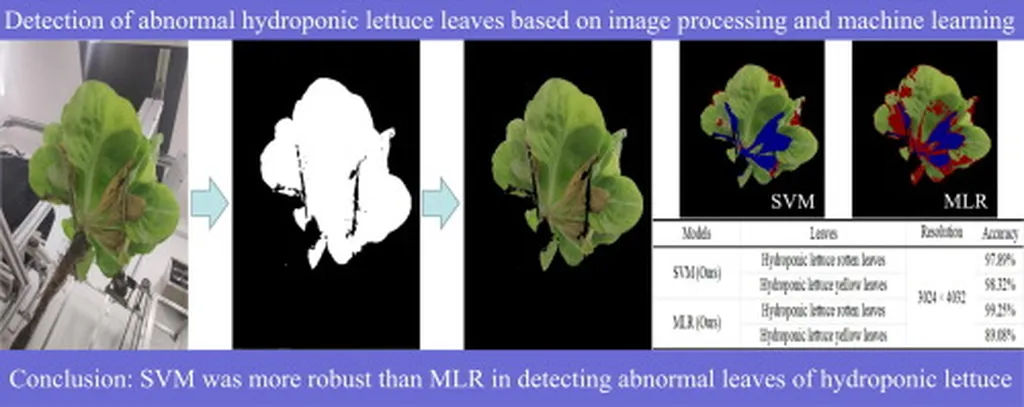In the heart of Arizona’s Yuma desert, a groundbreaking study is transforming how farmers detect and combat one of lettuce’s most formidable foes: Fusarium wilt. This soil-borne fungus, a persistent threat to lettuce crops worldwide, has long challenged farmers with its ability to reduce both crop quality and yield. Traditional detection methods, often relying on manual inspections, are not only time-consuming but also inefficient, leaving farmers vulnerable to significant losses. However, a novel approach combining Unmanned Aerial Vehicles (UAVs) and advanced deep learning is changing the game, offering a glimpse into the future of precision agriculture.
The study, published in *Smart Agricultural Technology*, introduces LeafyResNet, a customized deep learning model designed to identify Fusarium wilt in lettuce using high-resolution RGB imagery captured by drones. “Our goal was to develop a scalable, efficient solution that could help farmers detect Fusarium wilt early and accurately,” said Kabir Hossain, lead author of the study and a researcher at the University of Arizona’s School of Plant Sciences. Hossain, who also holds an affiliation with West Virginia State University, emphasized the importance of early detection in mitigating the disease’s impact on crop yields.
The research team collected over 6,000 high-resolution images from lettuce fields at the Yuma Center of Excellence for Desert Agriculture (YCEDA) over nine weeks. These images were cropped into smaller patches and augmented to create a robust training set for their deep learning model. The results were impressive: LeafyResNet achieved a 96.30% accuracy rate in detecting Fusarium wilt, with a remarkable 100% recall rate, ensuring that no infected areas were overlooked.
The implications for the agriculture sector are substantial. Early and accurate detection of Fusarium wilt can lead to more targeted and effective disease management strategies, reducing the need for broad-spectrum fungicides and minimizing environmental impact. “This technology has the potential to revolutionize how we approach plant pathology,” Hossain noted. “By integrating UAVs and deep learning, we can provide farmers with real-time, actionable insights that can significantly improve crop yields and reduce losses.”
The study also highlights the importance of customizing deep learning models for specific agricultural applications. LeafyResNet, adapted from the ResNet architecture, outperformed other baseline models, demonstrating the benefits of tailoring technology to the unique challenges of the field. This approach not only improves detection accuracy but also ensures that the model can capture subtle symptoms of disease, even in large-scale farming operations.
As the agriculture sector continues to embrace technological advancements, the integration of UAVs and deep learning models like LeafyResNet could pave the way for more sustainable and efficient farming practices. The research published in *Smart Agricultural Technology* by Kabir Hossain and his team not only offers a promising solution to a longstanding agricultural challenge but also sets the stage for future innovations in precision agriculture. By harnessing the power of technology, farmers can better protect their crops, enhance productivity, and contribute to a more resilient and sustainable food system.

